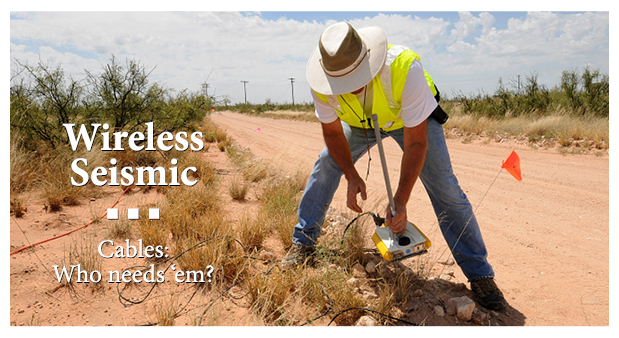World Oil, Innovative Thinkers, Melanie Cruthirds, News Editor

When it comes to seismic, people don’t like cables. In fact, people have disliked cables since the first analog seismographs were deployed in the field, decades ago. However, it has only been within the past 10 years that seismic technology has progressed to the point, where cable-less systems are more than just a topic of hypothetical debate.
“Often, in geophysics, a problem is recognized, and people can see the solution, but they don’t have the tools to come out with a practical, useable product,” said Doug Crice, founder of Wireless Seismic, a company specializing in onshore seismic acquisition technology.
An electrical engineer who has worked in geophysics for the past 45 years, Crice said the initial inspiration for a wireless seismic acquisition system came from a run-of-the-mill modem, like the ones many households use for Internet access. Considering that these relatively inexpensive pieces of equipment were able to relay information from one point to another, he reasoned that a machine, that combined the capabilities of a modem, a seismograph and acquisition software, would be able to gather information in the field, and transmit it to a final destination.
After working out some initial technical challenges concerning network and communication protocols, Crice said the concept for an acquisition system that could collect data at certain points, gather more and more data along the line, and deliver them to a central recording system, was ready for the design phase. A meeting at the Houston Technology Center with Roy Kligfield, who would become Wireless Seismic’s CEO, eventually led to the raising of a “modest amount” of money from Chesapeake Energy. This initial investment would be used to fund the creation of a proof-of-concept (POC) system, built by a crew of engineers and designers inRomania.
With 50 wireless seismic data acquisition stations sent from Romania and ready for testing, Crice, Kligfield and company headed to Arkansas, where Chesapeake had a team deploy the units. The group was able to successfully collect data wirelessly, with results essentially the same as those from a standard, cable-based system. A few funding rounds later, said Crice, the roots of Wireless Seismic were established, and a company, which would be founded officially in 2006, began to take shape. Even with a functioning POC, however, he said the group was still far from putting out a functioning commercial product that could be sold to customers.
Wireless Seismic sold its first system, of a few thousand stations, to Dawson Geophysical, which would go on to use it on 3D seismic surveys. Crice said it takes half as many people to deploy a wireless system in the field, and that the wireless transfer of information means users can immediately test the survey parameters and energy source, to begin making real-time decisions, while on a survey or frac job. Especially on fracturing projects, which tend to have shorter timelines, the ability to deploy an acquisition system, without having to lay cables or retrieve data collection stations, has become an increasingly cost-effective way to monitor seismic activity.
More than seven years after successfully testing a small batch of wireless seismic data acquisition stations, Crice said the technology, which gives a nearly real-time picture of what is happening in the field as it happens, is being deployed by the thousands around the world. The company’s system is now being used on a survey job in Kurdistan, where Asian Oilfield Services Limited, in conjunction with a major oil company, is using 7,500 wireless stations to search for oil. Crice said a job of this size marks a major milestone for Wireless Seismic, as the system is being proven as a practical, effective way to gather onshore survey data on a large scale.